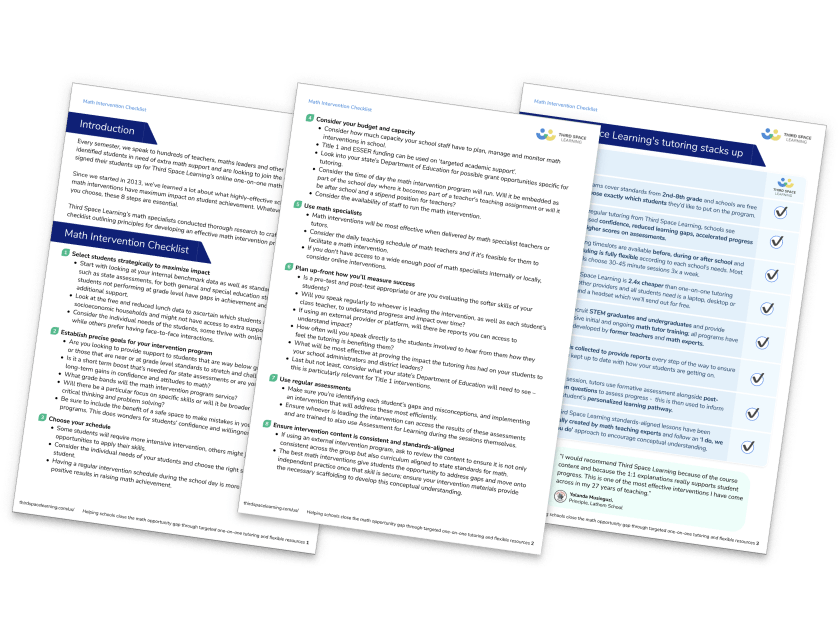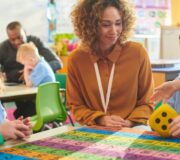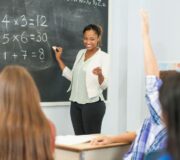18 FREE Math Intervention Resources And Ideas For Teachers
Math intervention resources are essential to engage learners in math skills across various grade levels. This article provides 18 free resources for your next small group or one-on-one math intervention for 3rd-5th graders.
Math intervention occurs within a Response to Intervention or RTI framework. It’s built on the idea that some students need extra instruction and practice to master math concepts.
When working with struggling students, having engaging materials for practice and an abundance of progress monitoring tools makes RTI and MTSS implementation more successful.
These free resources can be used in the classroom for Tier 1 interventions, small group Tier 2 interventions or special education instruction.
Math intervention resources
Math intervention program resources should support students’ skill development across the curriculum and target specific skills in number sense and problem solving.
Things to ensure math intervention resources include:
Review and practice for mastering skills
Teaching and modeling new concepts
Teacher-led practice for new concepts
Independent practice
Easy to monitor student progress
Individualized instruction to meet diverse learning needs
Resources should also support best practices in math instruction:
Explicit instruction or direct teaching of skills
Visual representation of math concepts
Hands-on activities and manipulatives
Peer-assisted or collaborative
Formative assessment
Math Intervention Pack Number and Operations in Base 10
Support your 3rd-5th grade intervention students with number and operations in base 10 with these ready-to-go math intervention packs
Download Free Now!Math intervention programs
Math intervention programs provide targeted support to students who struggle with math concepts and skills. These programs offer additional practice and reinforcement for students who need it.
Whether implemented in classrooms, small groups, or through one-on-one instruction, effective math intervention programs share common characteristics, they are:
Evidence-based
Tailored to individual student needs
Aligned with state and national math standards
Supported with high quality resources
Focusing on these elements, intervention programs can help bridge gaps in understanding and ensure that all students have the opportunity to succeed in math.

Meet Skye, the voice-based AI tutor making math success possible for every student.
Built by teachers and math experts, Skye uses the same pedagogy, curriculum and lesson structure as our traditional tutoring.
But, with more flexibility and a low cost, schools can scale online math tutoring to support every student who needs it.
Find out moreThird Space Learning’s intervention program
For over a decade, Third Space Learning has provided struggling students with one-on-one high-impact tutoring sessions.
Designed by math experts to align with the Common Core State Standards and specific-state standards, our math intervention strategies and reseached-based mathematics intervention program help students progress as much as 7 months in just 14 sessions.
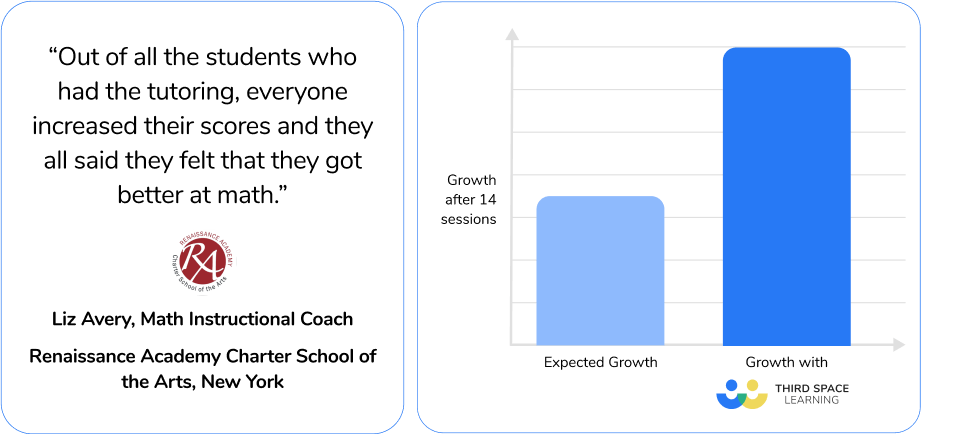
Highly trained AI math tutor Skye uses an I do, we do, you do step-by-step pedagogy with detailed examples and practice problems to ensure maximum progress for all students.
Each grade level intervention program aims to build a deep understanding of foundational concepts to support student growth.
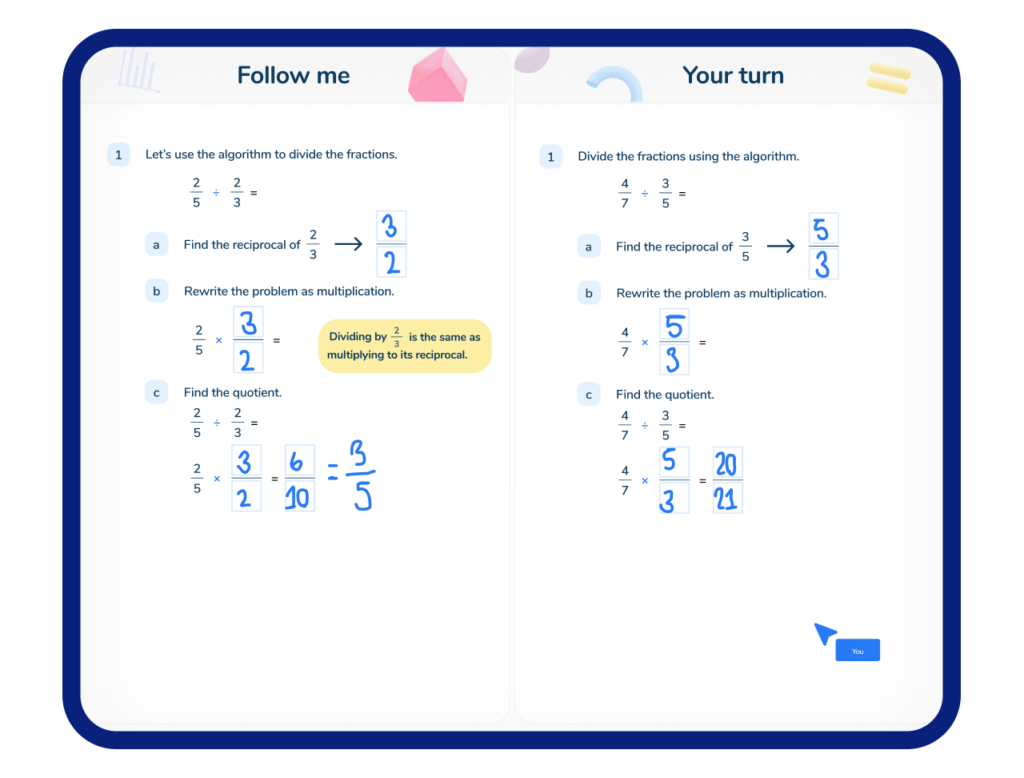
Free math intervention resource packs
We’ve made a selection of our math intervention sessions available to everyone for free. So now, you can use them in your school and district intervention programs to help your students accelerate their math education.
Each pack can be used as additional support for whole class instruction, targeted whole group instruction, or more intensive one-on-one instruction. No matter how you use them, they should build conceptual understanding and strong foundations of mathematical concepts.
To receive access, simply select the math intervention pack you’d like to download, and enter your email address and job title. The free intervention pack is sent straight to your inbox.
What’s included?
Every intensive intervention pack includes:
Instructions for the teacher or intervention provider
The math standard covered
Key mathematical ideas covered
Relevant mathematical terminology
Useful sentence stems
Common misconceptions that may arise with the appropriate tutoring strategy and check for understanding
Ready-to-go lesson slides with targeted instruction for a particular mathematical concept
Effective questioning if learners are stuck
Modeling prompts
Answers
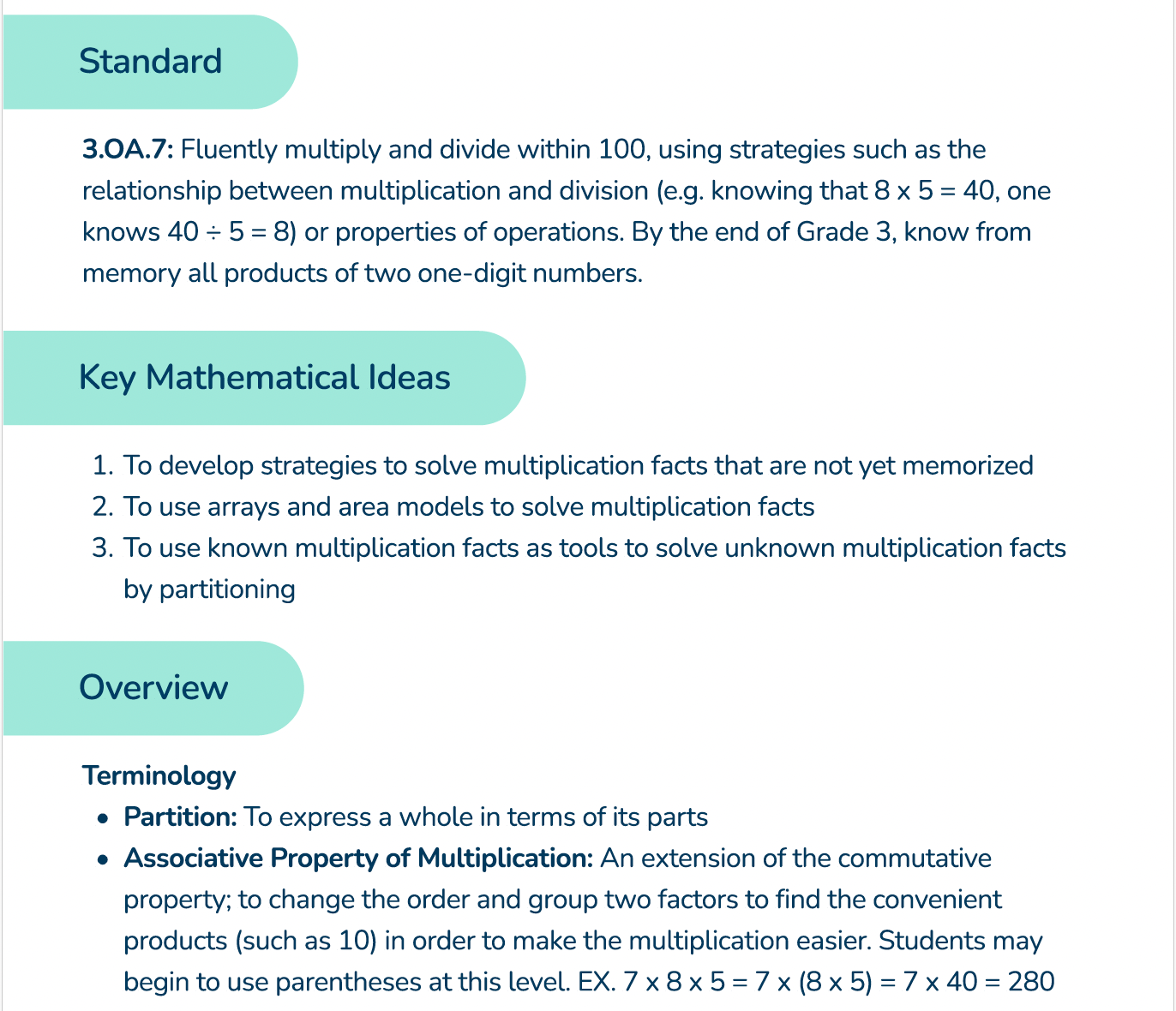
How to use Third Space Learning’s math intervention packs
Before any intervention, it is key to understand the concepts you’re teaching and prepare for possible student responses. That’s why our intervention packs include a breakdown of the standard covered, key terminology and sentence stems, and any possible misconceptions.
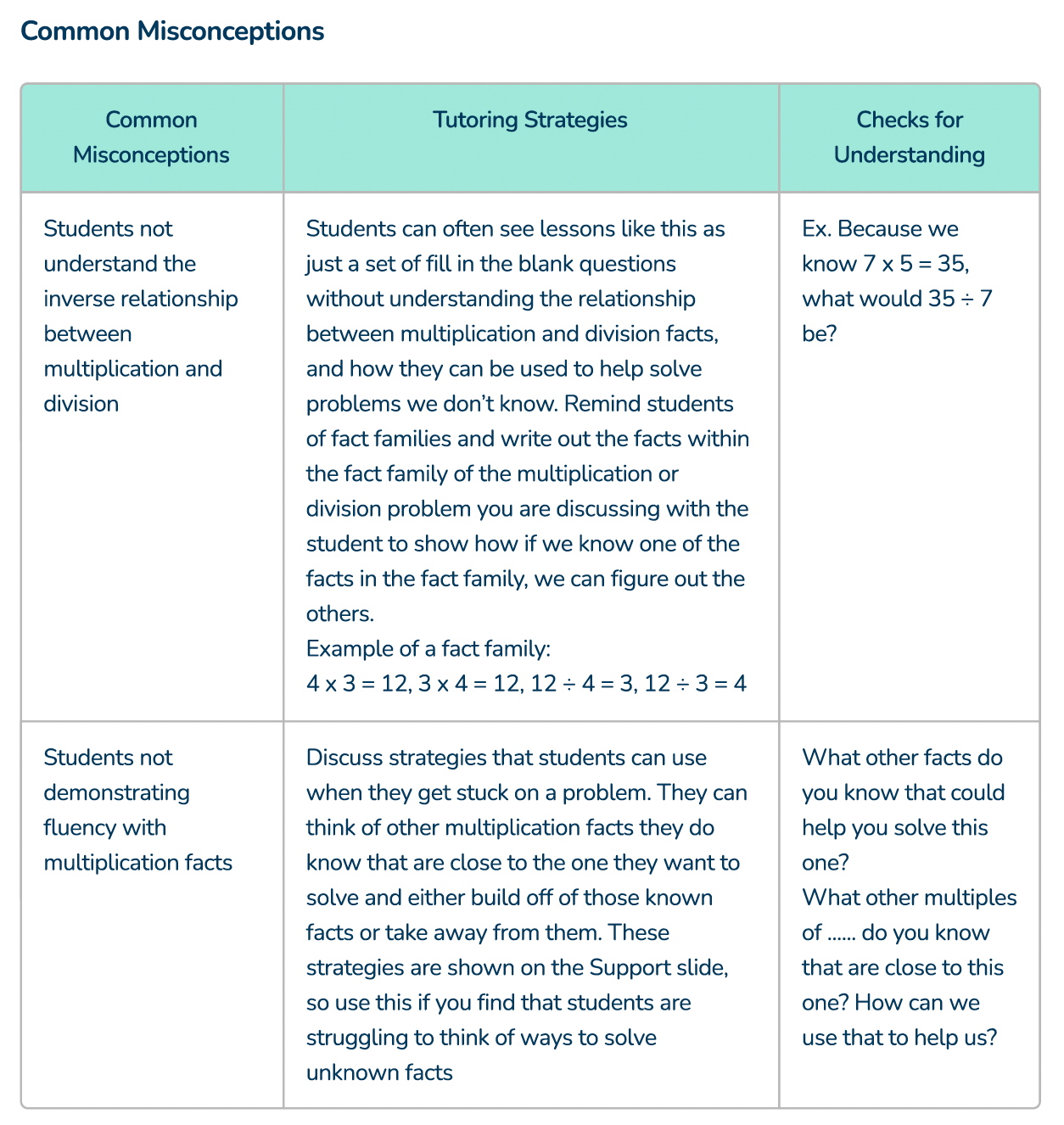
Title slide
The title slide requires students to use retrieval practice to access the skills required for the session. This helps to give the interventionist an idea of how they may need to adapt the learning if the session is one-on-one, or differentiate the learning if it is carried out in a small group lesson.
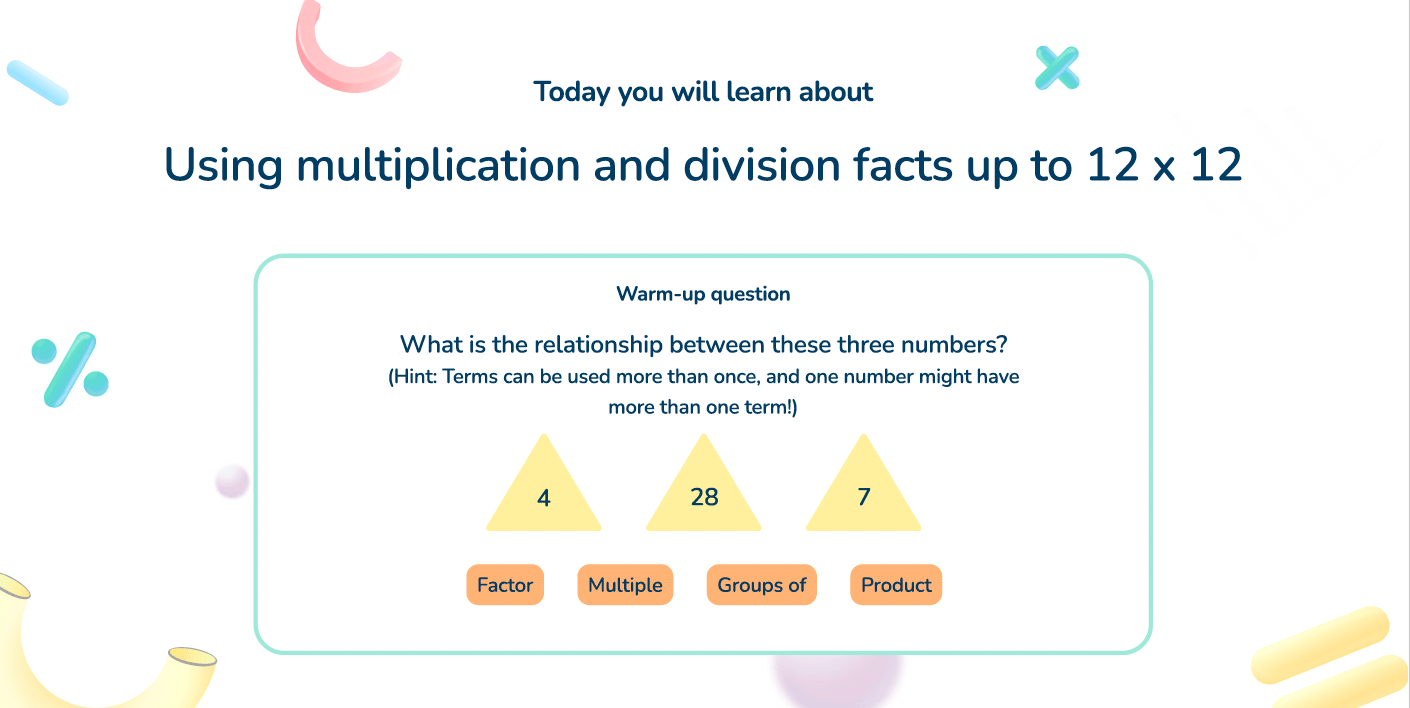
The free intervention packs provide key questions to ask the learner and answers for the interventionist to guide the student if they are stuck.
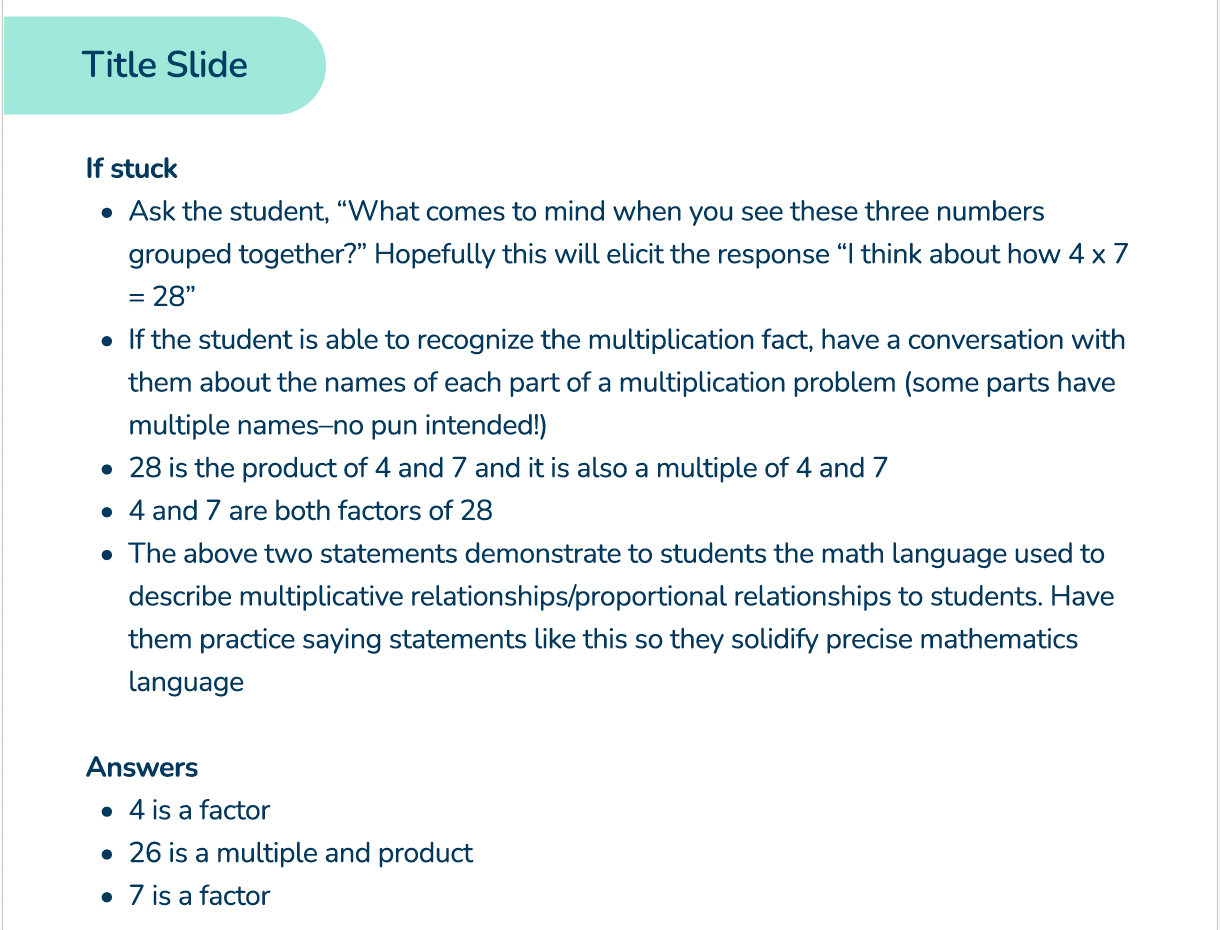
Mathematical pedagogy
Just like our online one-on-one math tutoring sessions, our free intervention packs use an I do, we do, you do pedagogy to help scaffold learning and guide students towards. independent practice.
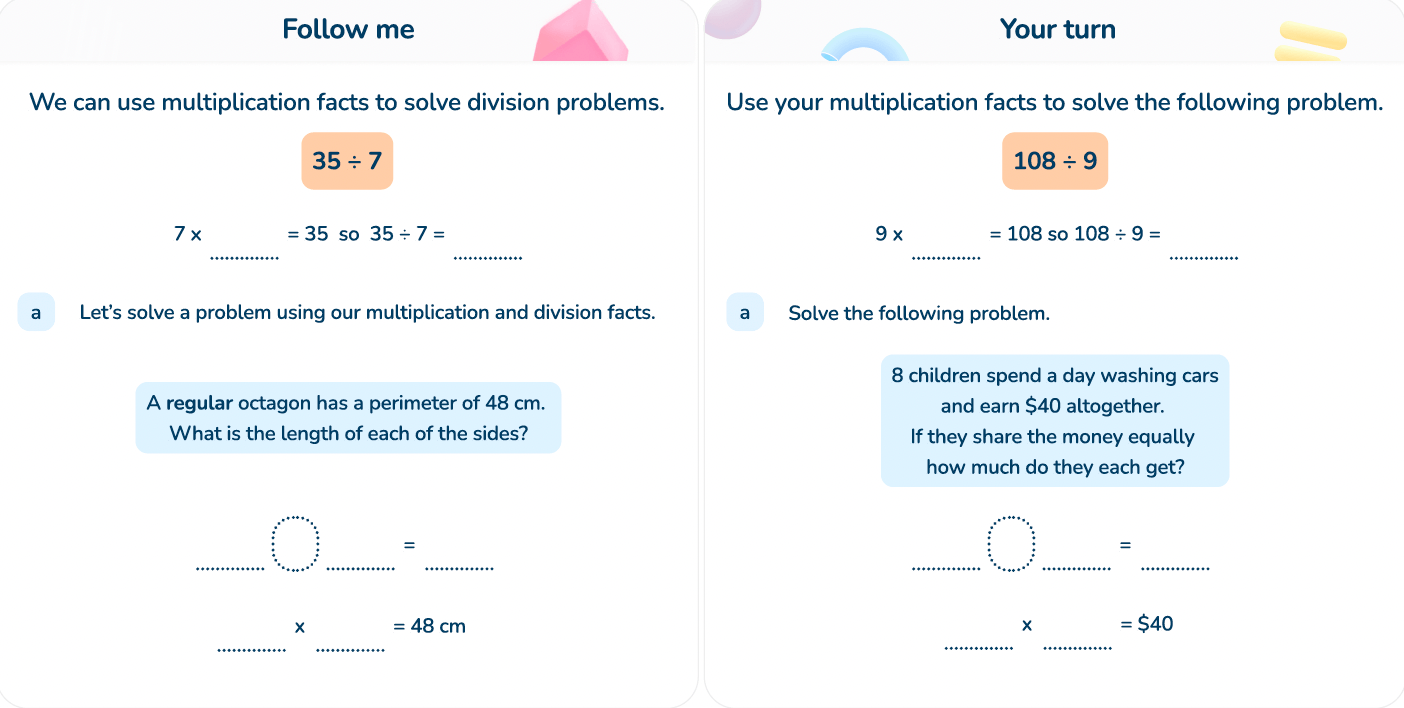
If learners need extra mathematics instruction for a concept or skill, each pack comes complete with guidance for interventionists to follow to help maximize student progress.


Math intervention resources for 3rd grade
Third grade marks a big change for students as they are expected to work with more math information than ever and bring multiple operations into one problem, making it crucial to address specific grade levels.
Students in third grade are expected to:
Engage with multiplication and division
Compare fractions
Apply operations to area and perimeter
Expand number sense to rounding greater numbers
Since math is cumulative, struggles that may not have been a concern in earlier grades can become a challenge for 3rd grade learners.
Specific 3rd Grade Struggles
Lacking a foundation
If students do not understand the core math functions, they cannot move on to more advanced skills. For example, if students do not understand counting in groups, then multiplication will be more difficult to learn.
Fractions
Ask any teacher, fractions are likely on the list of skills that students struggle with. Fractions can be a hard skill to conceptualize without the use of manipulatives and visual representations. Even then, the idea that we can compare (or add) parts of a whole can be difficult for students to comprehend.
Math anxiety
Math anxiety often sets in during third grade. Learners may feel like the work is too difficult or they aren’t equipped to find the right answer for every problem.
Tips and ideas for using resources
Math resources that explain information and help build 3rd graders’ foundation as they learn new content can help strengthen skills while alleviating math anxiety.
When using a math resource with 3rd graders:
Slow down and move at their pace. Make sure students understand the math terminology and concepts before moving on to the next step.
Provide students with explicit instruction in new math concepts so they don’t guess.
Provide lots of visual and interactive examples so students can solidify their understanding before independent practice.
Free resources:
Math Intervention Pack Fractions
Recognizing and making equivalent fractions
Understanding fractions as parts of a whole
Math Intervention Pack Operations and Algebraic Thinking
Solving two-step word problems using all 4 operations
Using multiplication and division facts up to 12 x 12
Math Intervention Pack Number and Operations in Base 10
Rounding whole numbers to the nearest 10
Subtracting whole numbers within 1,000
Math intervention resources for 4th grade
In fourth grade, math concepts become more complicated as students learn why math works, not just how to get the correct answer. They delve deeper into the processes and procedures for understanding how to:
Complete multi-digit multiplication and division
Answer multi-step word problems
Deepen understanding of fractions
Benefit from individualized instruction to meet diverse learning needs
The pace of learning speeds up as students solve math facts with automaticity.
Specific 4th grade struggles
Justification
Students have to explain and justify their work from showing how they solved a two-digit multiplication problem to writing a paragraph that details why they chose a strategy for a word problem.
Math language
Some students will struggle with the language required. Having math vocabulary resources and sentence stems to hand can help alleviate cognitive overload.
Processes
Other learners will get confused with the number of steps required to complete more advanced processes and problems.
Tips and ideas for using resources
Math resources for 4th grade provide models for comprehending what problems are asking and how learners can explain their thinking.
When using math resources with 4th graders:
Model step-by-step. Use think-aloud strategies to show students how you solve a problem and get from the language in the problem to the language in your response.
Use math talks. Train students to explain their thought process in partners or by presenting to the class.
Allow extra space when you are working on problems in a worksheet or resource.
Free resources
Math Intervention Pack Fractions
Understanding adding and subtracting fractions with like denominators
Understanding multiplication of a whole number by a non-unit fraction
Math Intervention Pack Operations and Algebraic Thinking
Geometric patterns
Finding Factors and Factor Pairs
Math Intervention Pack Number and Operations in Base 10
Multiply 2-digit numbers using the area model
Dividing using partitioning
Math intervention resources for 5th grade
Fifth grade math adds to the challenge of 4th grade math by providing engaging and stimulating learning environments that focus on challenging students. 5th graders are expected to:
Show their work and justify their answers with fractions
Increase fluency and automaticity with addition and subtraction of fractions
Start multiplying and dividing fractions
Apply the four operations to decimals
Complete problems about volume.
Specific 5th grade struggles
Math in fifth grade will challenge:
Students’ executive functioning
Working memory
Organization
Students are completing longer problems and relying on their math knowledge to complete problems.
Tips and ideas for using resources
In 5th grade, using resources that break down problems into manageable chunks and then support students’ ability to build up their stamina and organization helps students master 5th grade concepts.
To use 5th grade math resources:
Focus on organization. Teach students how to organize their math work, their workspace, and their thoughts.
Use examples of typical problems as references for how to solve problems. Turn example problems from a resource like the Third Space 5th grade intervention pack into an anchor chart for reference.
Use checklists. As you work through practice problems, provide students with a checklist for math problem solving on a notecard or bookmark.
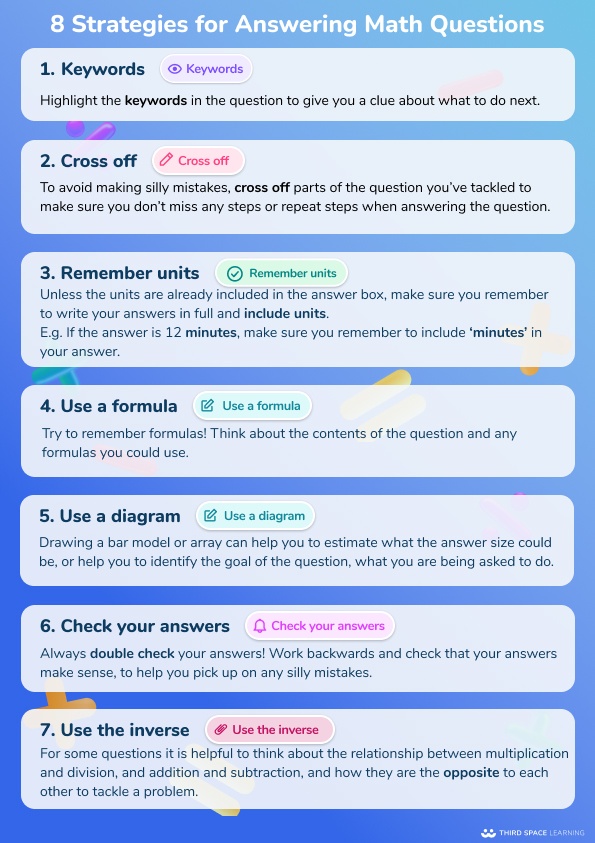
Checklist for answering math problems
Math Intervention Pack Fractions
Finding fractions of a whole number
Subtracting mixed numbers
Math Intervention Pack Operations and Algebraic Thinking
Identifying, recording, and graphing ordered pairs
Expressions involving parentheses
Math Intervention Pack Number and Operations in Base 10
Multiplying and dividing decimals using known facts
Reading and writing decimals in numeral, word, and expanded forms
How to design your own resources with progress monitoring
There may be times where the desired resource isn’t available for Common Core or your state standards and you need to create your own.
When working with students who are in Tier 3 intervention or one-on-one targeted intervention, you may need to create your own resource that meets the student’s needs.
These resources don’t need to be overcomplicated. Often, a piece of paper and pen are all you need to design a customized, differentiated and adaptive math practice sheet.
Important considerations when designing your own math intervention resource:
Include space to think aloud or have learners think through their math thinking. Write a problem and provide a box under each problem for students to explain their thinking.
Use a checklist format for students to work through problems. One idea is to have a checklist on the left side of a page, and three math problems on the right. Students check off each step as they work through the problems.
Provide lots of opportunities for practice and feedback
Emphasize individualized instruction to meet diverse learning needs. Tailor lessons and instructional strategies to cater to each learner’s unique requirements.
Teacher-created resources can also make use of math games. Tic tac toe or connect four are great ways to practice math.
Games are great ways to make math practice interactive and engage learners in collaboration, right through to high school.
Set up the game with math problems written on sticky notes
Give each player a sticky note and they solve the problem before their turn
While the other student is taking their turn, they can start a new problem
Intervention resources for various skill levels
Math specialists have written and designed adaptive math topic guides to use with students across various grade levels. All math topic guides contain ‘I do, we do, you do’ step-by-step instructions, detailed examples, practice math questions and teaching tips. These can be used in class or for pre or post-teaching.
Other free resources from Third Space Learning designed to improve fact fluency and problem solving include:
More resources, more math
The success of math intervention depends on reaching the right students at the right time. Individualized instruction is crucial for meeting the diverse learning needs of students, ensuring that personalized teaching approaches are used effectively. The math resources in this article will help you do just that while ensuring that students have fun mastering math skills.
Browse the Third Space Learning math resource library for great resources for elementary school and middle school students.
Resources cover every math topic and module from Number and Operations, including place value to geometry.
Use the games and activities to help students learn and practice math topics as a whole class or in small group interventions.
Math intervention resources from Third Space Learning are perfect for all the elements of Tier 2 or Tier 3 intervention, from initial formative and summative assessment to review to progress monitoring.
Read more:
FAQs
Some effective intervention strategies include explicit instruction and strategies like cover-copy-compare, self-monitoring checklists, and peer-assisted learning strategies. Additionally, challenging students through engaging and stimulating learning environments can foster higher-order thinking and deeper understanding of the material.
Start by using diagnostic assessments, curriculum-based assessments, or universal screeners to identify which students require support. Once they have identified the students who need support, the next step is to identify the skills that students need to master to succeed in the grade-level curriculum.
Tier 2 intervention strategies could be review lessons in core math skills, along with extra practice. Or, they could be explicit instruction in skills with the use of manipulatives or visual representations to support students’ math learning.
Do you have students who need extra support in math?
Skye—our AI math tutor built by experienced teachers—provides students with personalized one-on-one, spoken instruction that helps them master concepts, close skill gaps, and gain confidence.
Since 2013, we’ve delivered over 2 million hours of math lessons to more than 170,000 students, guiding them toward higher math achievement.
Discover how our AI math tutoring can boost student success, or see how our math programs can support your school’s goals:
– 3rd grade tutoring
– 4th grade tutoring
– 5th grade tutoring
– 6th grade tutoring
– 7th grade tutoring
– 8th grade tutoring
